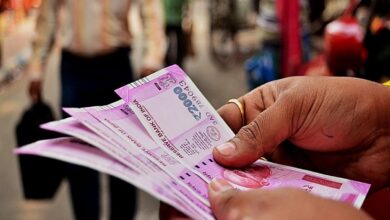legal
-
Trends

‘Complex area wasn’t confined to…’: In US, CJI DY Chandrachud explains queer verdict
‘Complex area wasn’t confined to…’: In US, CJI DY Chandrachud explains queer verdict Chief Justice of India, D Y Chandrachud‘s…
Read More » -
Trends

Microsoft completes $69 billion Activision purchase; biggest-ever deal in gaming industry
Microsoft completes $69 billion Activision purchase; biggest-ever deal in gaming industry The successful completion of Microsoft’s acquisition of Activision Blizzard…
Read More » -
Trends

US Government Takes Legal Action Against SpaceX, Accusing Hiring Bias Towards Refugees
US Government Takes Legal Action Against SpaceX, Accusing Hiring Bias Towards Refugees In a surprising turn of events, the United…
Read More » -
Trends

Delhivery-Go First Negotiations Collapse, Legal Proceedings to Continue
Delhivery-Go First Negotiations Collapse, Legal Proceedings to Continue In a surprising turn of events, talks between two major players in…
Read More » -
Trends

Dealer gets 10 years in prison in death of actor Michael K. Williams
Dealer gets 10 years in prison in death of actor Michael K. Williams Irvin Cartagena, a New York City drug…
Read More » -
Twitter Warns of Legal Action Against Nonprofit Tracking Hate Speech: Accusation of Trying to Harm Social Platform
Twitter Warns of Legal Action Against Nonprofit Tracking Hate Speech: Accusation of Trying to Harm Social Platform X Corp., the…
Read More » -
Trends

Nagpur businessman loses Rs 58 crore in online gambling
Nagpur businessman loses Rs 58 crore in online gambling A businessman from Nagpur suffered a significant loss of Rs 58…
Read More » -
Trends

Misra: Black Money Withdrawals Will Be Curbed
Misra: Black Money Withdrawals Will Be Curbed Demonetisation of 2016 was Gandhi’s first time leading the currency department, and he…
Read More »


